The endless hustle of modern life seems intent on fraying our nerves and scattering our attention in a million directions. While the self-help aisle offers remedies to de-stress and re-center, most feel recycled as they dispense familiar platitudes.
Yet beyond mainstream titles lies a treasure trove of underrated books exploring unconventional paths to balance your mind amid the chaos. Whether it’s adopting obscure philosophies or quirky rituals, these reads awaken a sense of wonder using fresh yet grounded approaches. They reveal how the everyday can be terrain for nourishing our minds by shifting outlooks versus external conditions.
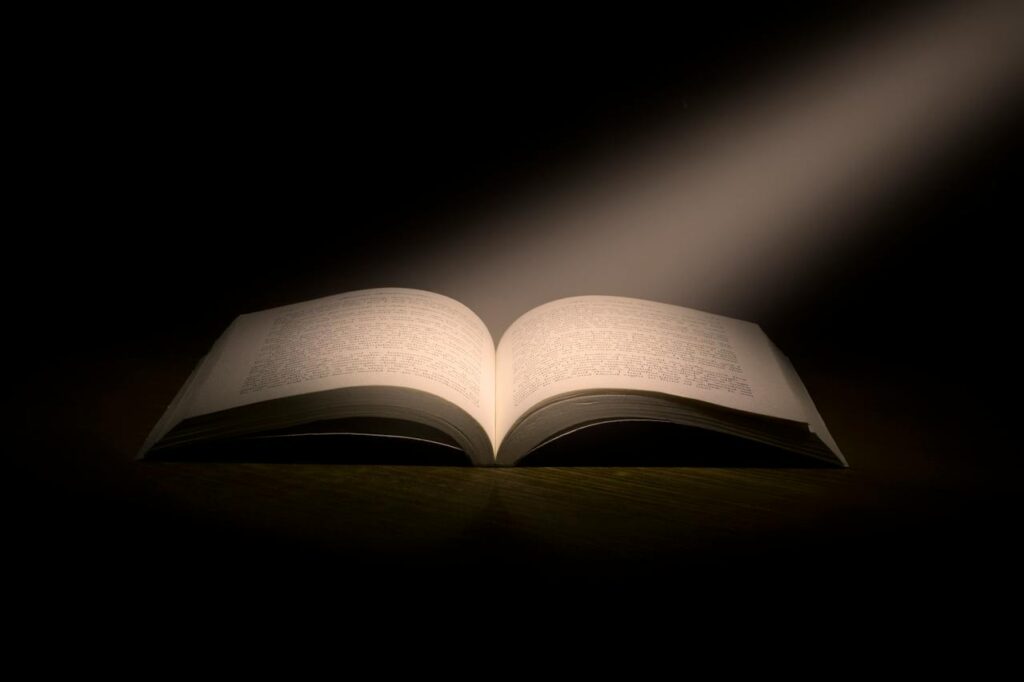
Here’s a unique list of books for maintaining a balanced mind:
1. “The Art of Stillness” by Pico Iyer – Makes a case for the overlooked but powerful idea of stillness as a way to find meaning and perspective.
2. “The Book of Joy” by Dalai Lama and Desmond Tutu – An insightful dialogue between two spiritual masters on finding joy and contentment even in adversity.
3. “The Tao of Pooh” by Benjamin Hoff – Uses the beloved Winnie the Pooh characters to explain Taoist principles simply and humorously.
4. “The Book of Hygge” by Louisa Thomsen Brits – Explores the Danish philosophy of Hygge as a way of cultivating comfort, togetherness and joy in everyday rituals.
5. “Ikigai” by Héctor García and Francesc Miralles – The Japanese concept of Ikigai gives insight into finding purpose and meaning to have balance and satisfaction in life.
6. “The Art of Mindfulness” by Thich Nhat Hanh – Accessible meditations and teachings from the renowned Zen master on living mindfully and at peace.
7. “The Joy of Less” by Francine Jay – Offers decluttering as a pathway to inner calm by focusing on essentials and letting go of excess.
8. “Steering by Starlight” by Martha Beck – An unusual take on balancing traditional and creative approaches to making fulfilling choices.
9. “Eastern Body, Western Mind” by Anodea Judith – A unique bridge between chakra work and psychology for mind-body wellbeing.
10. “The Book of Doing” by Allison Arden – Playful daily rituals requiring little time to find everyday joy and balance.
"The Art of Stillness" by Pico Iyer
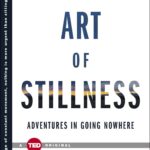
In this thought-provoking book, acclaimed travel writer Pico Iyer examines the lost art of stillness, making a compelling case for its power in our fast-paced modern lives. Stillness, he argues, is not about doing nothing, but rather about presence, listening, openness and trying to find meaning amidst the chaos.
Iyer draws on his rich experiences spending time in Japan to illustrate how stillness permeates Japanese culture, from Zen Buddhism and tea ceremonies to design and even baseball. He observes that the Japanese appreciate the beauty in ordinary tasks and crafts by infusing them with stillness and awareness, citing examples like drawing, gardening, and the meticulous presentation of food. Iyer reflects on how cultivating stillness has allowed him to tap into deeper parts of himself and his creativity during his extensive travels.
Interspersed with quotes from renowned writers and thinkers, Iyer’s own attempts to build stillness through habits like early morning walks, turning off distractions to immerse in a place, and spending a week meditating in near-silence at a monastery add authenticity. He focuses less on techniques but more on stillness as an attitude we bring to activities by paying whole-hearted attention.
Iyer acknowledges the challenges of nurturing stillness amidst our addiction to speed and overload of information, but offers wise counsel on overcoming them. He compellingly conveys how stillness deepens meaning in our relationships, work and experiences by awakening our senses and heightening the joy of ordinary moments. This ode to the forgotten gift of stillness is a rewarding read for our unsettled times.
"The Book of Joy" by the Dalai Lama and Desmond Tutu
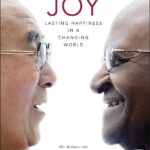
This inspiring book recounts a week-long conversation between the Dalai Lama and Archbishop Desmond Tutu about finding joy during life’s inevitable suffering. As long-time luminaries dedicated to spiritual practice and human welfare, they share personal stories and wisdom grounded in Buddhism and Christianity on defining and sustaining joy.
The two global spiritual leaders met for the Dalai Lama’s 80th birthday in Dharamsala, India, engaging in five days of intimate dialogue interspersed with meditation and visits from distinguished guests. Despite their traumatic exile from Tibet and South Africa respectively, they exude authentic joy and laughter as they address profoundly philosophical questions about dealing with adversity, anxiety, anger and failure through compassion, gratitude, generosity and perspective.
Central to their discussion is the distinction between pleasure and joy – pleasure being fleeting sensory delight while joy is enduring and arises from within, unburdened by negative emotions. When faced with injustice, they advise channeling anger compassionately to dispute ideas not individuals, thereby reducing suffering. They unpack the myths, obstacles, techniques and pillars surrounding joy, analyzing its innate nature and interdependence with hardship.
While grounded in deep wisdom, they infuse the lessons with lightness in camaraderie. The conversational format makes lofty concepts graspable through real-world applications. By openly sharing their most difficult trials along with the value of community, humility and humanity, they make a stirring cross-cultural case for joy as an imperishable life force. This stimulating, witty and poignant discourse leaves one spiritually nourished.
"The Tao of Pooh" by Benjamin Hoff
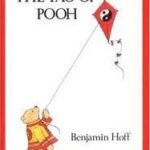
In this unique book, Benjamin Hoff uses the beloved Winnie-the-Pooh characters to elucidate the basic principles of Taoism. The author contends Winnie-the-Pooh lives in accord with the Chinese philosophy of Taoism, arising from his natural simplicity and easygoing approach to life.
The book introduces Taoist concepts like P’u (the un-carved block) – the original, simple state from which all things emerge – using Pooh as an exemplar of this. In contrast, characters like Rabbit and Owl are too intellectual and busy to experience P’u. The author goes on to explain “wei wu wei” or the Taoist practice of “action through non-action” illustrated by Pooh’s ability to achieve things without intentional effort. Other Taoist ideals like living in the here and now and achieving fulfillment by aligning with the natural order of things are also reflected in Pooh’s uncomplicated, carefree existence.
Hoff skillfully analyzes specific scenes from A.A. Milne’s classic Pooh stories to demonstrate Taoist teachings about: overcoming ego by becoming humble and little; the value of intuitive knowledge vs intellect; not overcomplicating life; and the mental flexibility allowing one to adapt to changing conditions. The light, simple language and imagery make Taoist viewpoints effortlessly graspable.
Throughout, the essence and appeal of both Pooh and Taoism emerge as residing in their plainness, naturalness and spontaneity. Hoff provides an ingenious introduction to Taoist beliefs as experienced through the innocence and emotive power of Pooh in the Hundred Acre Wood, conveyed with skillful charm.
"The Book of Hygge" by Louisa Thomsen Brits
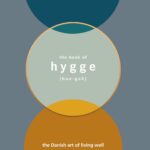
This charming book explores the Danish philosophy of Hygge, pronounced “hoo-ga”, which loosely translates to warmth, comfort and connection. Hygge promotes the idea of cultivating cozy contentment by celebrating the small, ordinary pleasures of everyday life.
Louisa Thomsen Brits traces the origins of Hygge as arising from the long Danish winters which necessitated enjoying simpler comforts at home with loved ones. She outlines the elements integral to Hygge which include candlelight, fireplaces, warm beverages, soothing textures, friendly gatherings, familiar settings, good conversation and acknowledging daily joys. Enjoying Hygge is about indulging your senses, giving yourself soothing experiences and acknowledging positive moments as they happen.
The author offers tips on easy, inexpensive ways to incorporate Hygge into daily routines like lighting candles during meals, going technology-free for periods of time, hosting potlucks with friends or having picnic-style indoor lunches. She shares ideas for activities from Swedish fika breaks to crafting to outdoor winter walks that encapsulate Hygge by awakening wonder in the mundane.
While rooted in Danish culture, the book conveys how the ethos of Hygge is universally appealing by helping us slow down and reconnect with people and the present moment. This charming guide leaves one feeling warmer and re-enchanted with finding meaning, comfort and contentment in everyday pleasures.
"Ikigai: The Japanese Secret to a Long and Happy Life" by Héctor García and Francesc Miralles
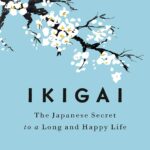
This book unravels the Japanese concept of Ikigai (pronounced “icky-guy”) which is seen as the convergence of four primary elements – what you love, what you are good at, what you can get paid for and what the world needs. Having a strong sense of Ikigai or purpose and meaning in life allows the Japanese to embrace longevity and satisfaction.
The authors trace how many Japanese practices like multi-generational households, community support systems and fresh, vegetable-based diets already foster longevity. But they highlight finding one’s Ikigai as the deeper psychological reason why residents of the Japanese island of Okinawa live vibrant, 100-year lives despite trying times. Japanese wisdom has long recognized that matching passions and skills to a purpose sustains the resolve and vigor to power through loss, hardship and oppression.
Through profiles of Okinawan centenarians, highlights of Japanese lifestyle habits and insights from thinkers, the book shows how setting small goals give structure and meaning while staying open and adaptable allows individuals to define purpose on their own terms. Key elements are listening to oneself, embracing success and failure alike with grace by staying resilient and focusing on effort over outcome.
While the tendency is to associate Ikigai with major life changes, the book makes clear it is more an outlook allowing one to appreciate every day instead of postponing happiness to the future. Layering small joys and hardships alike into the present moment provides internal fulfillment. With reflection and self-awareness, Ikigai then sustains this mindset to give lasting meaning.
"The Art of Mindfulness" by Thich Nhat Hanh
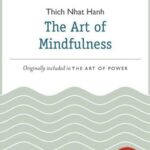
In this introduction to mindfulness meditation, renowned Zen Buddhist master Thich Nhat Hanh offers accessible techniques to live with greater serenity and awareness of the present. Grounded in decades of personal practice and spiritual teaching, Thay – as his students call him – makes a compelling case for cultivating mindfulness in order to reduce anxiety about the future and clinging to the past, thereby improving health, relationships and productivity.
The book provides a simple yet profound guide to let go of destructive thoughts and emotions by focusing on breathing, walking meditation and examining how sensations and feelings come and go if we refrain from attaching stories or analysis to them. Using real world examples and easy exercises like mindful eating and washing dishes, Thay shows how to apply presence into routine tasks making every moment an opportunity to understand reality as it is, preventing additional suffering.
While mindfulness has become popular as a therapeutic technique, Thay emphasizes it was originally a tool to gain liberation from delusion about the transient nature of things. By training ourselves to observe rather than react automatically to rising emotions, we can respond instead of perpetuating destructive patterns. Thay reassures readers that mindfulness practice takes perseverance but brings the joys of inner peace.
Written in clear language with warmth and encouragement for beginners, the book includes guided audio meditations. By legend living an engaged yet calm, compassionate life, Thich Naht Hanh leads by example in this practical book revealing little but important ways to dwell deeply in the present.
"The Joy of Less" by Francine Jay
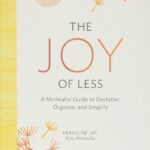
In this guide to minimalist living, Francine Jay makes a compelling case for purposefully shedding excess possessions and activities to create space for what truly matters. Part memoir and part how-to, the book chronicles how the author’s shift from collector to essentialist living brought financial freedom, time and energy to pursue more fulfilling goals.
Jay traces her journey of disposing belongings that no longer served her until only loved items remained. Demonstrating how decluttering is often emotional and imperfect but worthwhile work, she offers advice through personal stories on overcoming reasons for holding onto things, dealing with judgment from others and preventing accumulation relapse. Alongside, Jay interweaves philosophical insights from East Asian traditions, ethical Consumerism and simplicity movement luminaries like Henry David Thoreau.
While reducing external clutter, Jay reveals how she also applied minimization inwardly by relinquishing draining habits, relationships and beliefs. Free of maintaining and financing excess stuff, she gained savings for early retirement allowing her to follow artistic dreams and passions. The book outlines practical tips for editing possessions compassionately across all life domains by continuously distinguishing needs from mere wants.
Jay shows how decluttering creates physical and mental space to focus on intentionality and activities that nurture rather than numb us. Simplifying to feel abundance amidst less is about radical, ongoing self-honesty, mindfulness of usage value over appearances and making room for profound joy to unfold. Written with humility and wit, this book makes the rewards of an unburdened life tangible.
"Steering by Starlight" by Martha Beck
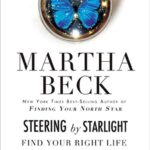
In this innovative self-help book, acclaimed life coach Martha Beck advocates listening to your “inner weirdo” and integrating more creativity into decision-making instead of solely relying on traditional linear thinking. Beck contends that this “starlight” guidance allows you to navigate effectively when logic and rationality fail to show a clear path forward in careers, relationships and personal growth.
Blending research and colorful stories, Beck details the case for why sensible advice can often limit possibilities or backfire because it ignores invisible factors behind issues. She shares an example of overcoming fertility struggles by indulging in whimsical activities that lowered stress levels enabling eventual pregnancy against medical opinions. Beck argues that seemingly unreasonable impulses often lead to breakthrough solutions precisely because they bypass assumptions of what should work.
The book introduces tools and exercises for accessing starlight inspiration ranging from keeping wonder journals to having debates between your emotional and rational sides when facing dilemmas. It guides readers gently through the fears and blocks hindering you from hearing messages arising from your core self. While encouraging self-trust, Beck also balances intuition with seeking counsel to weigh unconventional advice.
Written in warm, witty and motivational style, this book gives permission and frameworks for blending creative stirrings with pragmatic counsel. It makes the case for being an empowered observer of your multi-dimensional self, rather than its critic. Ultimately, Beck offers starlight steering as allowing you to live courageously and authentically amidst uncertainty.
"Eastern Body, Western Mind" by Anodea Judith
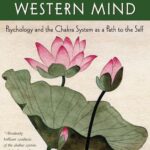
Blending Eastern chakra philosophy and Western psychology, this pioneering book by therapist Anodea Judith offers a framework for using the chakra system for greater self-awareness and personal growth. Arguing that integrating mind-body insights from diverse traditions allows for a fuller understanding of our consciousness, Judith maps each of the seven chakras to developmental stages, definitions of health and issues that commonly arise when imbalances occur.
Explained through detailed descriptions and illustrations, the chakras encompass basal, sexual, solar plexus, heart, throat, brow and crown energy centers. When aligned, they promote vitality across the spectrum of needs from security, belonging, identity to intuition and meaning. Judith outlines comprehensive wellness strategies corresponding to each chakra spanning diet, body movement, counseling techniques, yoga poses, breathing exercises and creative expression.
A pioneer in utilizing chakras as a therapeutic tool, Judith demonstrates practically how to use the system to diagnose conflicts manifested as mental dysfunctions or physical symptoms. Building self-awareness around personal developmental history allows one to actively transform energy blocks into growth opportunities. While acknowledging Western skepticism around subtle energy, concrete case profiles ground the book in demonstrable healing applications ranging from freeing inhibitions to improve public speaking to overcoming childhood abandonment issues for secure relationships.
Scholarly yet emotive first-hand accounts substantiate how profoundly impactful releasing trapped emotions through mindful chakra healing can be. Written with missionary-like passion, this seminal work succeeds as an immersive user guide to employ the chakra system for empowerment.
"The Book of Doing" by Allison Arden
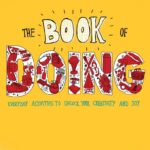
In this practical guide, life coach Allison Arden presents small, everyday rituals requiring little effort but yielding big rewards for more joy, calm and balance. Arden makes the case for action over reflection showing how tangible doing inspires motivation and habit building more than trying to think one’s way to change.
Covering areas from optimism and connection to simplicity and intuition, the book outlines basic quick rituals requiring less than fifteen minutes to integrate into routine. Like greeting five strangers or preparing breakfast mindfully, the rituals serve as baby steps towards goals by reshaping neural pathways incrementally yet powerfully. While keeping needed resources low, Arden amps emotional reward by choosing activities that spark novelty, meaning and immediacy like creating encouragement notes or taking mini-adventures in your neighborhood.
Filled with research in positive psychology and neuroscience, the book explains the compound benefits of seemingly trivial practices. As resilience is built through regular little actions, inspiration unfolds organically so progress gains momentum painlessly. By demystifying discipline as merely well-designed habit formation, Arden allows for flexibility too. Her premise is easing into doing naturally inspires depth, duration and joy rather than overwhelm.
Written in a helpful coaching style packed with troubleshooting advice, checklists and tracking tools, Arden empowers readers to curate your own “doing” system targeted to your needs that fits smoothly into work and home flow. Simple, un-intimidating and uplifting, this book delivers small doses of everyday wonder.

So next time you’re seeking respite from fast-paced demands, let one of these eclectic books be your pocket refuge for kindling calm and sparking inspiration. The journey inward begins as soon as you start reading.
Hey there! We hope you love our fitness programs and the products we recommend. Just so you know, Symku Blog is reader-supported. When you buy through links on our site, we may earn an affiliate commission at no extra cost to you. It helps us keep the lights on. Thanks.
Disclaimer: The information provided in this discussion is for general informational and educational purposes only. It is not intended as medical or professional advice. Only a qualified health professional can determine what practices are suitable for your individual needs and abilities.
